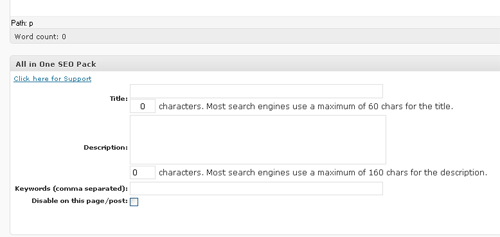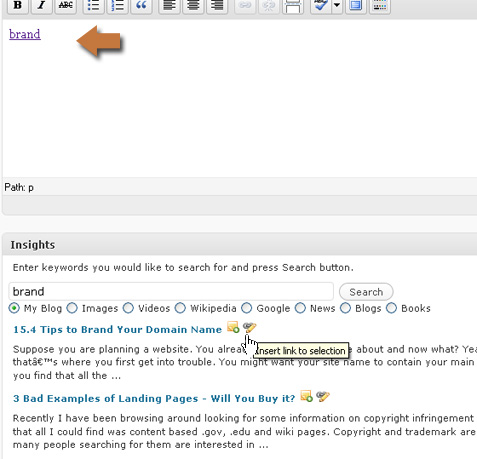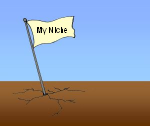 The blogroll was once an essential part of every blog. Today, that’s no longer the case. More and more bloggers have removed the traditional blogroll from their blog sidebars and replaced it — believing that a blogroll is not an effective use of the valuable real estate on a blog’s sidebar.
The blogroll was once an essential part of every blog. Today, that’s no longer the case. More and more bloggers have removed the traditional blogroll from their blog sidebars and replaced it — believing that a blogroll is not an effective use of the valuable real estate on a blog’s sidebar.
In simplest terms, the shift in thinking from “blogroll cricital” to “blogroll not very important” has evolved as bloggers determined their blogrolls did not deliver an adequate return on their investments (in this case, the investment is the blogger’s time and the space allocated to the blogroll in the sidebar).
So is the blogroll truly defunct or is there still value in having a traditional blogroll in your blog’s sidebar?
Naturally, different bloggers have different views on this topic, and only you can decide what’s best for your blogging goals and your audience. If your goals for your blog include making money and building a larger audience, then every little bit of space on your blog should be filled with something that adds value either to the user experience or to your overall business plan for your blog.
Still not sure what to do with that blogroll? Think of it this way – if an ad on your blog wasn’t bringing in revenue, you’d replace it. The same line of thinking should apply to your blogroll. If your blogroll isn’t helping you reach your blogging goals, you should replace it.
If you’re still not sure what to do with your blogroll, take a look at your blog analytics using a tool like Google Analytics to learn if visitors to your blog are actually clicking on the links in your blogroll. On the flip side, look at where incoming traffic is coming from to your blog in an effort to determine how many people are finding your blog through other blogrolls versus links within blog posts, comments, etc. Blogrolls work both ways in terms of driving traffic — outgoing to other blogs you recommend and incoming from other blogs where you’re blog is included in other blogrolls to your blog. Analyze both effects to determine if your blogroll truly adds direct or indirect value to your blog.
If you decide to keep a traditional blogroll in your blog’s sidebar, make an effort to keep it up-to-date. A blogroll that’s cluttered with blogs that are no longer updated or irrelevant to your blog’s topic and audience (for example, you linked to a blog out of reciprocal linking courtesy), is not useful and can actually damage the user experience on your blog.
So you have three choices when it comes to blogrolls: keep a traditional blogroll in your blog’s sidebar, delete your blogroll from your blog completely, or replace your blogroll with a single, separate page of recommended reading and links. This final option is becoming more and more popular as a way to keep some form of a blogroll without sacrificing space on a blog’s sidebar.
It’s up to you to evaluate your goals and analyze how you’re using the space on your blog in order to meet those goals. Just remember, you have choices, and just because another blogger is doing something, that doesn’t mean it’s the right thing for your blog, too.
What do you think? Do you still have a traditional blogroll on your blog? Leave a comment and share your thoughts.

 To effectively maintain and grow our blogs we need to pay very close attention to the facts that lie within our site’s statistics. The sole purpose of statistics is not just to show off our rising numbers in visitor traffic but can be an extremely useful tool for making those well needed adjustments to our performance that can make the difference between an OK blog and one that truly rocks.
To effectively maintain and grow our blogs we need to pay very close attention to the facts that lie within our site’s statistics. The sole purpose of statistics is not just to show off our rising numbers in visitor traffic but can be an extremely useful tool for making those well needed adjustments to our performance that can make the difference between an OK blog and one that truly rocks. I’m in love with a WordPress plugin. Let me stop right now and tell you that I’m not a WordPress plugin floozy. I don’t dive in and try every WordPress plugin I hear about, and I definitely don’t jump on the bandwagon and pay for WordPress plugins. Nope. I’m usually late to the WordPress plugin party and try plugins after other people test them out and share their thoughts about them.
I’m in love with a WordPress plugin. Let me stop right now and tell you that I’m not a WordPress plugin floozy. I don’t dive in and try every WordPress plugin I hear about, and I definitely don’t jump on the bandwagon and pay for WordPress plugins. Nope. I’m usually late to the WordPress plugin party and try plugins after other people test them out and share their thoughts about them. Undeniably, we can’t help but admire the legends who came before us; who set the trends and standards that many aim to achieve and maintain. Financial success and fulfillment of life are very attractive goals but require the dedicated, passionate and sometimes lucky soul who will dare to venture and claim the prize.
Undeniably, we can’t help but admire the legends who came before us; who set the trends and standards that many aim to achieve and maintain. Financial success and fulfillment of life are very attractive goals but require the dedicated, passionate and sometimes lucky soul who will dare to venture and claim the prize.





 I often refer to the term I use to describe amazing content that people want to share online as shareworthy, and today, I’d like to dive a bit deeper into the concept of creating shareworthy content, so your blog and online reputation can benefit from the
I often refer to the term I use to describe amazing content that people want to share online as shareworthy, and today, I’d like to dive a bit deeper into the concept of creating shareworthy content, so your blog and online reputation can benefit from the 
 It seems like everyone is trying to find their niche on the social web, particularly when it comes to blogging. In simplest terms, a niche is a very specific area of focus, and a niche blog is one that is tightly focused on one specific subject.
It seems like everyone is trying to find their niche on the social web, particularly when it comes to blogging. In simplest terms, a niche is a very specific area of focus, and a niche blog is one that is tightly focused on one specific subject.